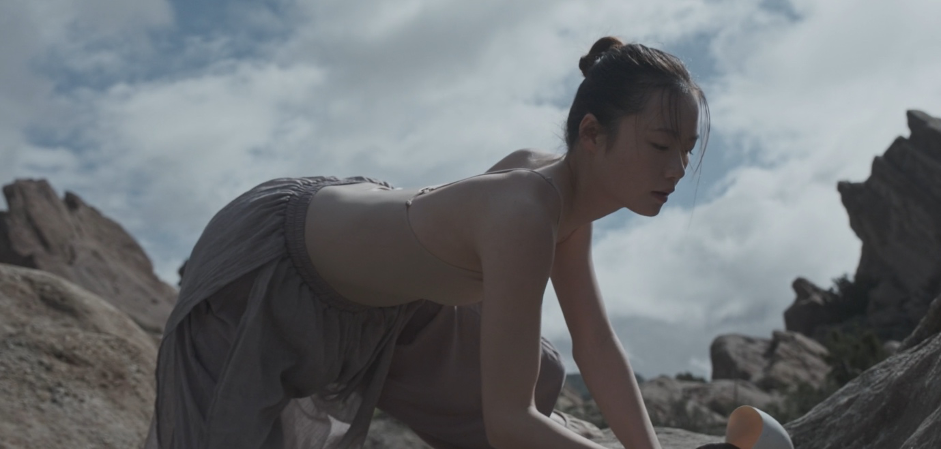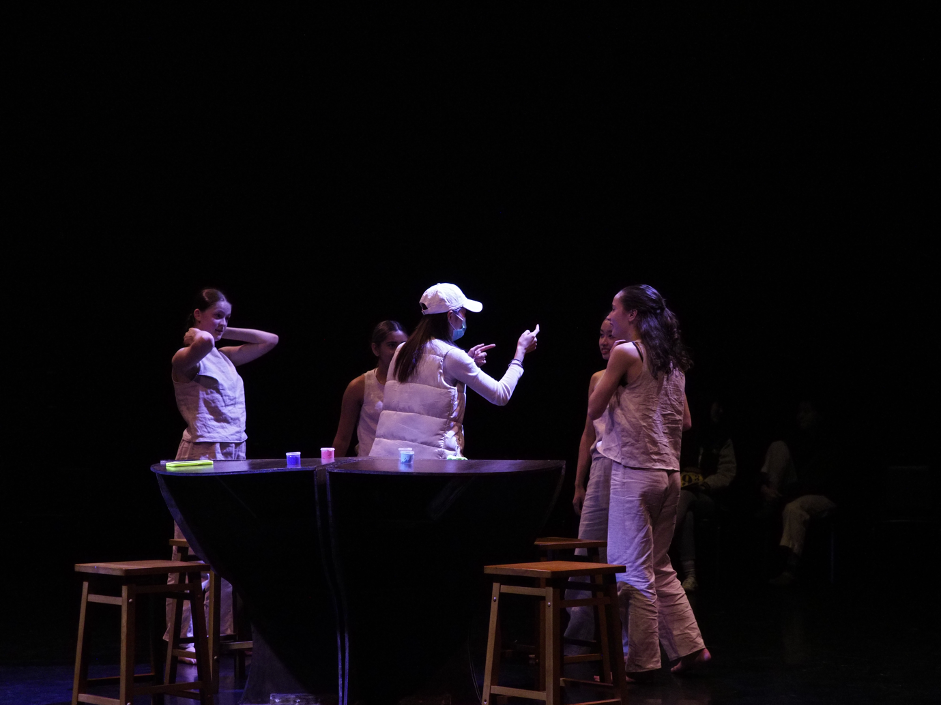In the fluid tapestry of contemporary dance, where each movement tells a story and every leap breaks boundaries, stands Zhihan Yang, a maestra of motion who orchestrates the contemporary beat with unparalleled grace and innovation. Her narrative is a dance in itself—starting not with a spotlight but with the disciplined cadence of relentless practice, refinement, and the audacious desire to express the inexpressible.
Educated in some of the world’s most esteemed academies, from Beijing to the West Coast of America, Zhihan has carved a niche that straddles cultures and continents. Her commitment to dance education, alongside her performance career, has enabled her to shape the talents of emerging dancers, bestowing upon them the legacy of storytelling through the articulate language of the body.
The accolades and global applause, from Los Angeles to Vesuvius, are but milestones on Zhihan’s artistic odyssey—a journey rife with the physical demands of rehearsals and the euphoria of performance. It is within these moments of creation and execution that her true genius unfolds, crafting a dialogue of movement that resonates with audiences worldwide.
Our intimate conversation with Zhihan Yang peels back the curtain to reveal the rigor that fuels her creative fire, the collaborative spirit that enriches her productions, and the unyielding pursuit of growth that defines her artistic horizon. Her insights offer a narrative that is both personal and universal—a testament to the power of persistence, the beauty of transformation, and the perpetual motion of artistic evolution.
As she continues to etch her influence on the fabric of contemporary dance, Zhihan invites us to perceive the world through her artistic lens—one that is constantly in motion, driven by passion, and unafraid to confront innovation with the poise of a dancer in flight.
Embark on this journey with us as we traverse the rich landscape of Zhihan Yang’s achievements, each anecdote a choreographed step in a career that not only dances to the contemporary beat but also shapes it.
Let’s dive right into it, Zhihan! Can you describe the moment when you first learned that you’d won the Double Platinum Award at the Showstopper Dance Competition? What was going through your mind?
When the judges announced that we had received the highest score and the premier award in our category, I was overwhelmed with a sense of accomplishment—it all felt incredibly worthwhile! We dedicated six months to this project, with rehearsals and extended classes stretching late into every weeknight. During that period, we intensely honed our skills and grasped the fundamentals of water sleeves—a task that proved tedious and even stressful as the competition loomed closer and we questioned our chances of achieving a high score.
Mastery of water sleeves demands precision; the slightest breeze or a moment of instability can mar a performance, so luck, to some degree, plays its part as well.

Throughout this journey, my role was multifaceted: I was not only the creator and instructor of the class but also an active participant in the performance. This required me to continuously assimilate and internalize what I had learned, transforming it into teachable content for the other performers to enhance their craft. Admittedly, this iterative learning and teaching cycle posed its challenges, yet it deepened my comprehension of the subject matter.
I am profoundly grateful for our team’s camaraderie; we supported and looked after one another, contributing to a collective strength. This experience has enriched my perspective on teamwork and will undoubtedly inform my approach to collaborative endeavors in the future.
Take us through the journey of creating the piece that secured the Overall First Placing at the Showstopper Dance Competition. What challenges did you encounter and how did you overcome them?
Organizing such a large ensemble for rehearsals was no mean feat, particularly as many participants were new to the Chinese Dance Water Sleeve. Juggling multiple roles, I was tasked with understanding each individual’s progress and adapting the training to suit their unique needs, all with the goal of optimizing the overall performance.
Arguably, the greatest challenge was to ensure that every student could showcase their best within a limited timeframe. To address this, I developed a cyclical training regimen that escalated from simple to complex, guiding learners to discover and refine their technique and rhythm. This approach of repeated drills and practice eventually culminated in an outstanding performance.
Being recognized at film festivals in both the US and Italy is an impressive feat. How do these two experiences differ and what do they collectively mean to you as an artist?
American and Italian film festivals are steeped in their unique cultural heritages, with each offering distinctive opportunities for networking. In the United States, the scope of industry professionals is expansive, with a particular emphasis on fostering global connections. In contrast, Italian festivals often center on European cinema and artistic collaborations, offering a more focused cultural exchange.
Achieving recognition in the US can open doors to a vast and influential audience, potentially leading to collaborations that extend one’s reach and recognition across the industry. On the other hand, the emphasis at Italian film festivals on artistic and cultural dialogue with diverse parts of the world can immerse me in a multitude of perspectives and influences, thereby enriching my creative process.
Being acknowledged at film festivals in both the United States and Italy signifies that one’s work resonates on a broad and varied scale. Such recognition is not only a personal accolade but also a catalyst for artistic growth, equipping me with invaluable insights to create work that transcends geographical and cultural confines.
What inspired the choreography or story behind the dance film that was selected as an Outstanding Official Selection at the 92Y Mobile Dance Film Festival?
The film “Refresh,” which I submitted to the 92Y Mobile Dance Film Festival, is a short dance video conceived amidst the epidemic. It features a seamless edit of 10 distinct locales within Wuhan. The lockdown constrained us to our homes, unable to venture outside. However, it was this imposed stillness that prompted deep reflection.
My intent was to capture and document the reality of those times through the medium of dance film, employing the body’s expressive language across varied spaces to convey the inner tumult of emotions. The film aims to depict the city’s resilience, its pulsating spirit of recovery, amidst an era of upheaval and resolute transformation.

In an industry where art is subjective, how do you view the significance of awards and recognitions? Do they influence your future projects or creative approach in any way?
There’s no doubt that awards and recognition act as a form of external affirmation for an artist’s skill and creativity, bolstering their self-esteem and providing a sense of achievement. Accompanying the accolades are increased visibility, media interest, and public scrutiny, which can attract new audiences and potential collaborators.
On a personal note, I acknowledge that such acknowledgment has influenced my creative process. The pressure to match or surpass previous accomplishments has shaped my methodology. Upholding a certain standard of excellence or innovation in my work becomes imperative to meet the expectations set by prior accolades. These recognitions serve not only as benchmarks in the evolution of my artistic endeavors but also as catalysts that compel me to continuously hone my craft, venture beyond conventional creative boundaries, and seek out fresh avenues of artistic expression.
Looking back at your early works versus the award-winning pieces, how do you think you’ve evolved as an artist, and what role did these accolades play in that evolution?
Experience and practice are indeed accumulated incrementally, and as a creator, I’m engaged in an ongoing process of refining both my technical abilities and artistic sensibilities through persistent trial and error. With each experience gained, my willingness to experiment with new styles, mediums, and subjects increases, independent of awards. Such experimentation injects fresh energy into my creative pursuits.

I believe that the most valuable aspect of participating in international film festivals is the wealth of cultural insights gained. This exposure broadens my thinking, allowing me to contemplate the significance of my work from various perspectives during the conceptual stage. Engaging with the recognition and awards circuit garners invaluable feedback from peers, critics, and audiences alike, which steers my creative journey. The accolades I’ve received have fortified my confidence and ambition, spurring me to set my sights on larger and more challenging projects and to persistently push the boundaries of my creative expression.
Can you give us some insights into the preparation and dedication it takes to produce a work that’s worthy of international recognition, like the Short Dance Film Finalists at the Vesuvius International Film Festival in Italy?
Producing a work that garners international acclaim is indeed a formidable challenge, with numerous factors at play. The initial step is to establish a clear and original creative vision for your short dance film—consider deeply why this work needs to be brought to life. Prior to commencing the actual filming, a significant amount of groundwork is required. This preparatory phase encompasses storyboarding, casting, location scouting, choreography, as well as costume and set design, not to mention the assembling of necessary equipment and crew.
When it comes to selecting performers, clear communication of the creative vision and concept is paramount, ensuring all actors are aligned with the director’s intentions. Beyond the hurdles of production, sophisticated post-production is essential, demanding meticulous attention to editing, sound effects, and color grading.
The final piece of the puzzle is a blend of patience and an ongoing commitment to learning. Attaining international recognition typically doesn’t happen overnight. Many creatives face rejection before reaching the pinnacle of success. It is the ability to stay focused and resilient in the face of such challenges that often separates the successful from the rest.
Having achieved such notable accolades in your career so far, what’s the next big goal or challenge you’ve set for yourself? Are there any other awards or platforms you’re aiming for?
In the next phase of my creative journey, I aim to present my work on more prominent festival stages. I aspire to realize a dance theater production, and perhaps delving into a large-scale installation will be my subsequent venture. Additionally, I am committed to further investigating the transformative potential that interdisciplinary collaboration can unlock, with technology serving as a conduit for creativity.
I plan to delve into the prospects of employing motion capture technology, virtual reality, and interactive installations to augment choreography. These tools are instrumental in pushing the limits of conventional dance and crafting immersive experiences for audiences.




